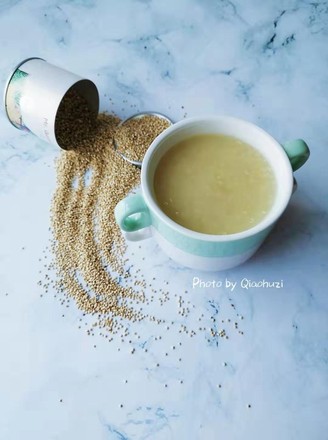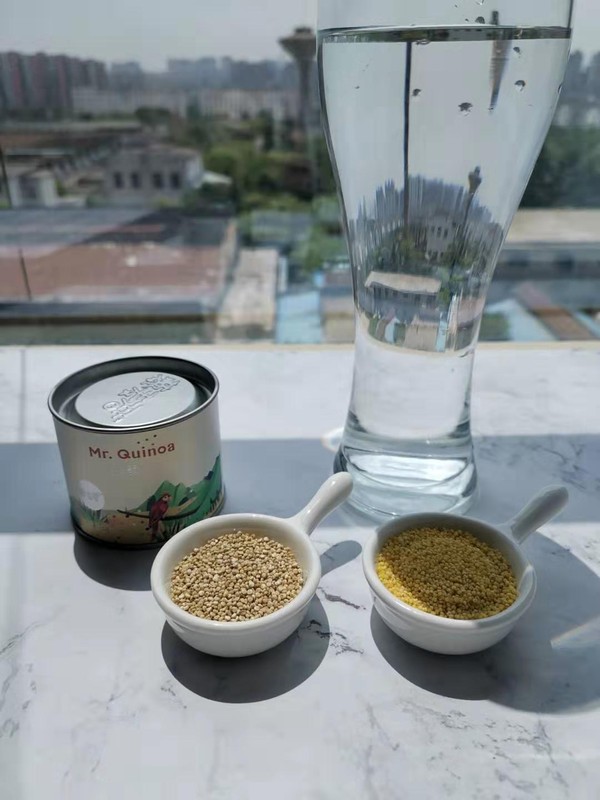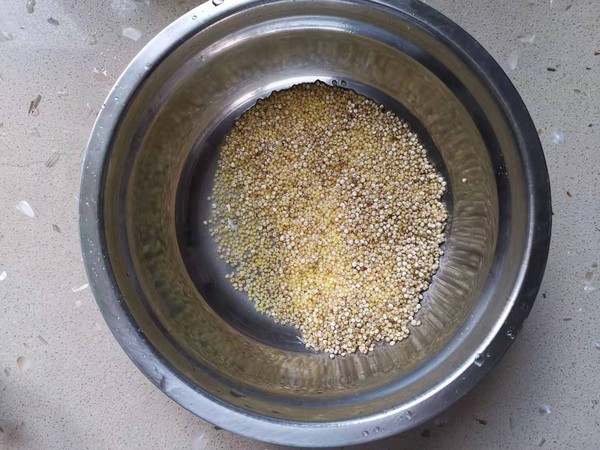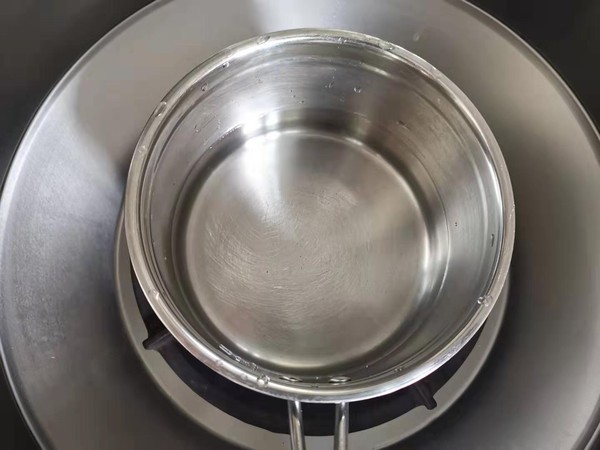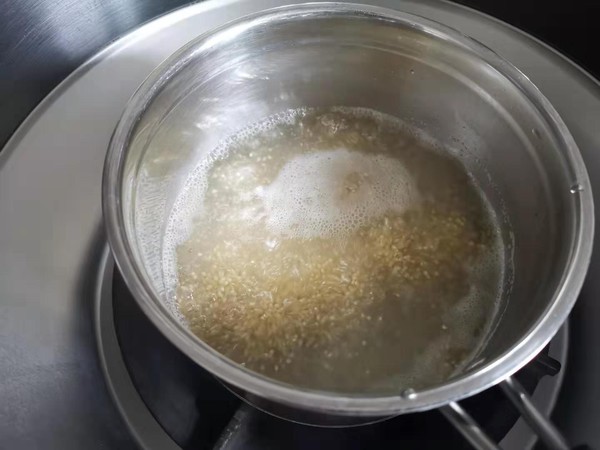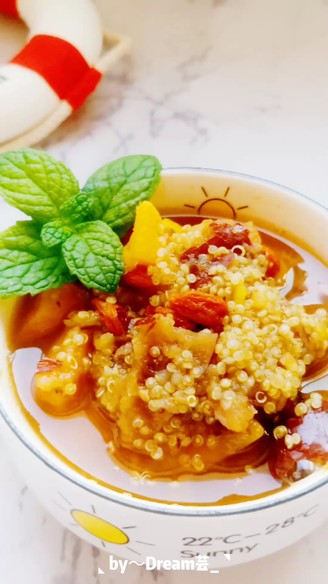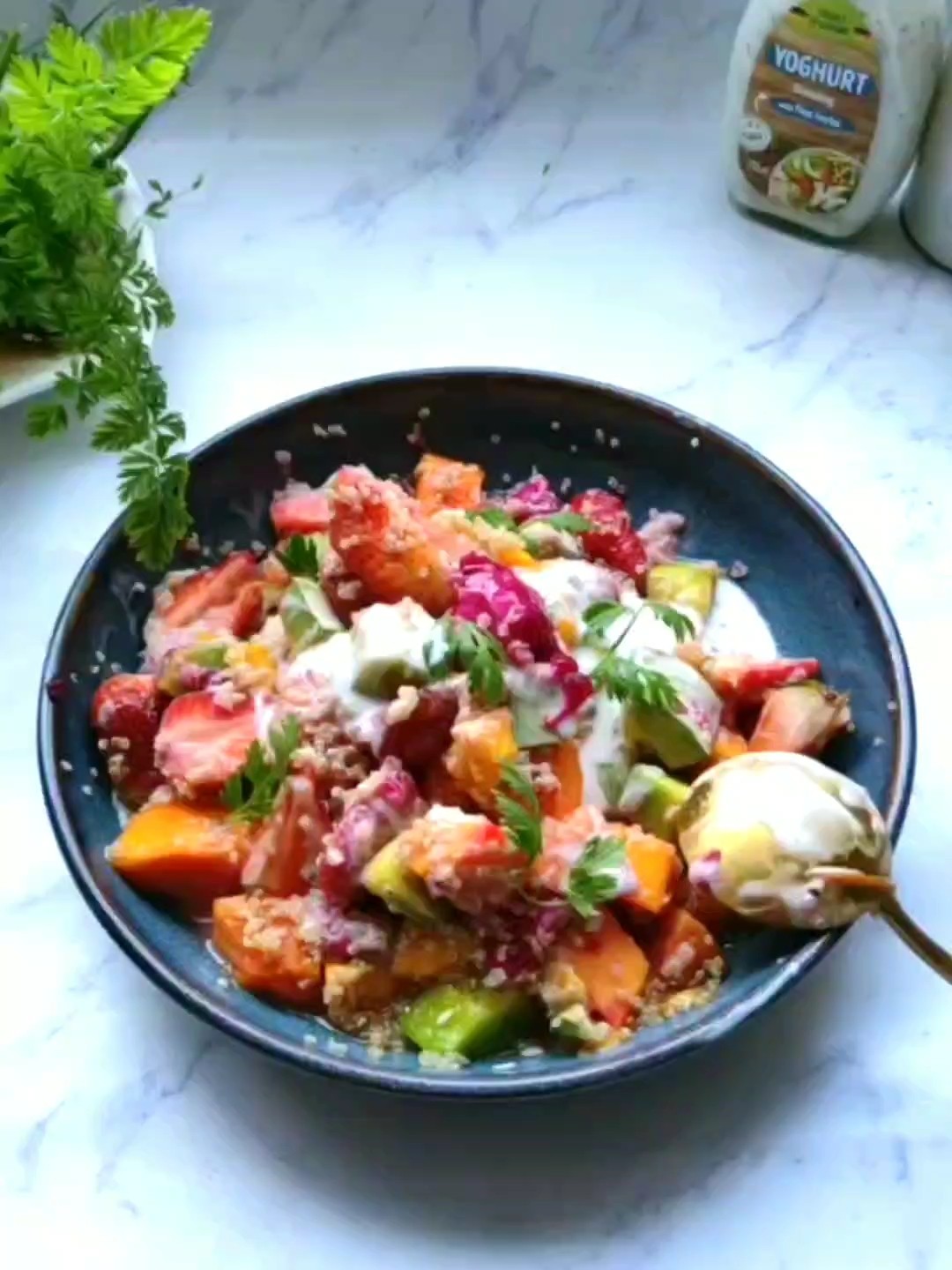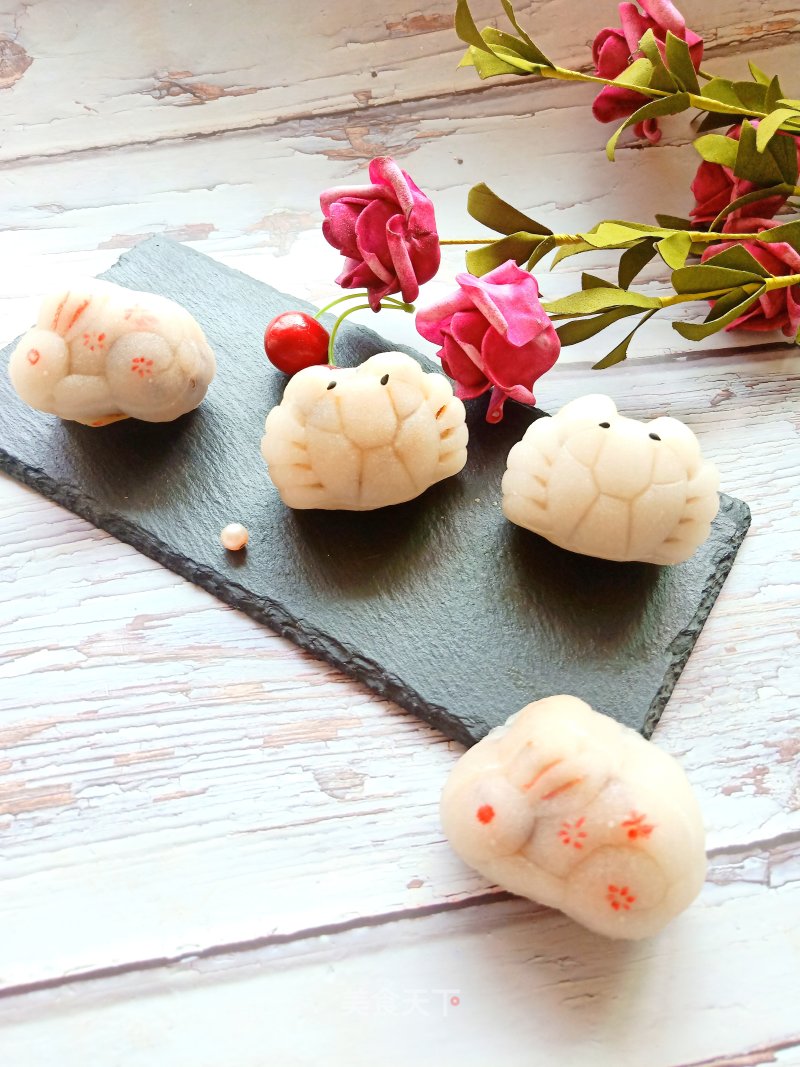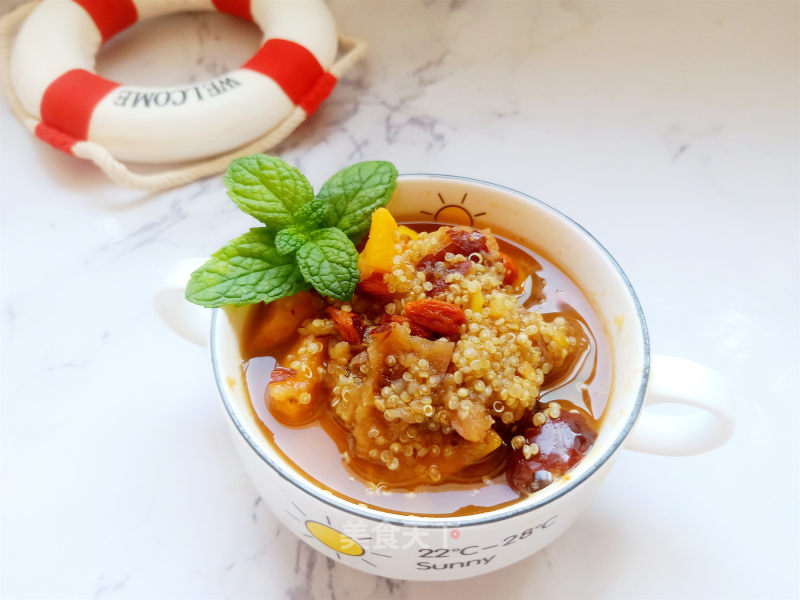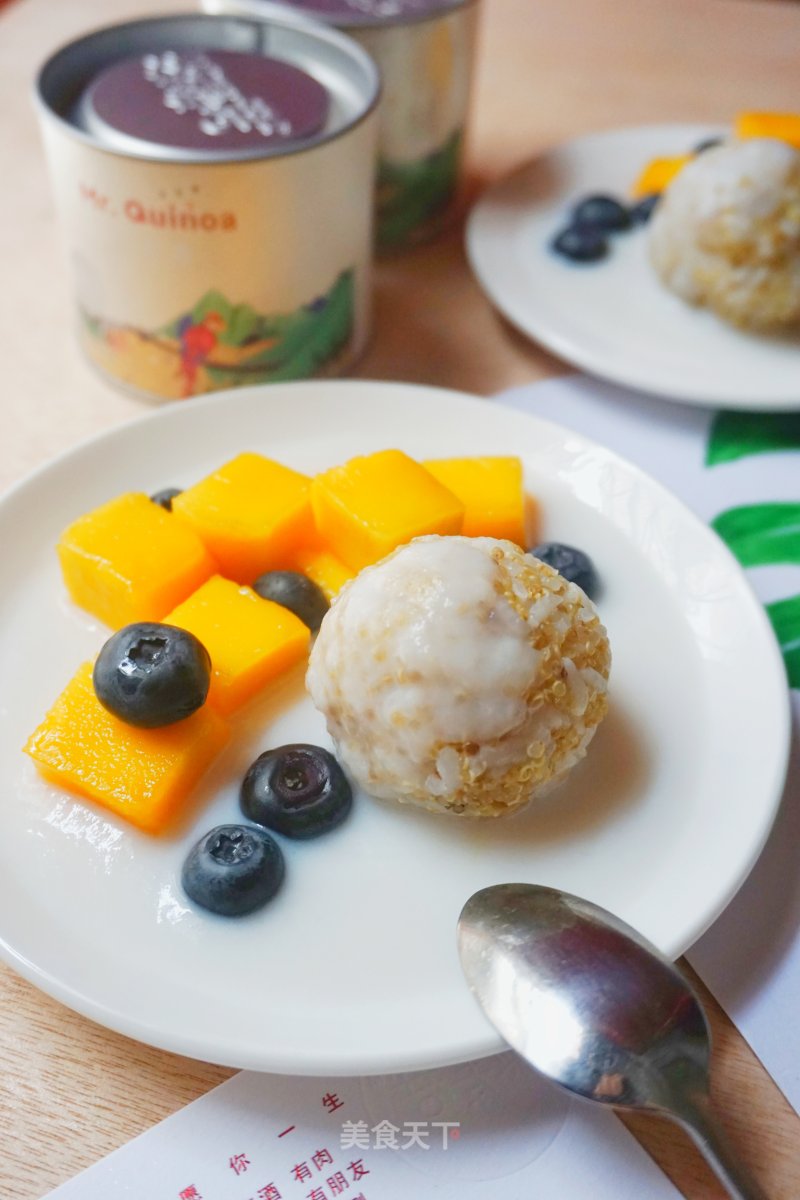White Quinoa Millet Porridge
by Alice Beard Potato Chips
Favorite
Difficulty
Easy
Time
30m
Serving
2
Quinoa, native to the Andes of South America, is the main traditional food of the indigenous people of the Inca. It has a history of edible and planted for more than 5,000-7,000 years due to its unique nutritional value. It nurtured the Inca nation, and the ancient Incas called it "the mother of food."
The color of quinoa seeds is mainly white, black, red, etc., and the nutrient content is not much different. Among them, the white taste is the best, the black and red taste are relatively poor, and the grains are also smaller.
Quinoa belongs to the Chenopodiaceae, and edible plants in the Chenopodiaceae are relatively rare (spinach and sugar beets belong to the Chenopodiaceae). The cereals we eat every day, wheat, rice, corn, barley, sorghum, etc., are basically gramineous. Quinoa's nutritional and edible value exceeds most grains, perhaps because it is a unique quinoa plant. Quinoa is called the lost ancient "nutrition gold", "super grain", and "food of the future" by international nutritionists. It is also regarded as the "king of vegetarian food" by vegetarian lovers and is loved and has the most potential in the future. One of the crops.
It should be noted that one of the nutritional characteristics of quinoa is that the germ ratio is extremely high and has nutritional activity, which is not available in many grains. Nutritional activity means that the germ, endosperm, and seed coat tissue structure of the seed is intact and fresh, and has the ability to germinate. The enzymes in the seed have always been active, and various nutrients are in the freshest state. Due to the strong nutritional activity of quinoa, after maturity, the seeds will germinate on the ears when it rains, and the nutrients will be greatly reduced and the nutritional activity will be lost. Therefore, there is no rainfall during the maturity period, and the quinoa harvested in time after maturity can maintain the nutritional activity and the highest nutritional content. In addition, excessive processing will lose the precious nutrients of quinoa. In order to preserve more nutrients, the finished quinoa minimizes the deep processing procedures and eats the grain directly.
Quinoa is easy to cook and tastes good, and it can be paired with any ingredients.
Eat alone. When cooking the porridge, boil it in boiling water for about 10-15 minutes to make it swell and the grains to become translucent before eating. When braising rice, the firepower should not be too high. If you use a rice cooker, use a little more water. To make it more fragrant, bake the quinoa in a dry frying pan for a few minutes before putting it in the pan. During the baking process, stir it constantly to heat it evenly so as not to burn. If it is steamed, it needs to be soaked for several hours in advance. Quinoa is a complex starch and high dietary fiber food. It takes a long time to absorb enough water before steaming to become soft. For example: colorful quinoa rice, stir-fried quinoa, quinoa eight-treasure rice, etc.
Today we will make porridge with millet, which is also called corn, yellow rice, and yellow rice. Known as "rare delicacies, superior treasures" at home and abroad, since ancient times, it has been the first choice tonic for pregnant women, infants, the elderly, and the weak. Millet contains 0.12 mg of carotene per 100 grams, and the content of vitamin B1 ranks first among all grains. It contains a variety of vitamins, proteins, fats, carbohydrates, calcium, phosphorus, iron and other nutrients necessary for the human body. At the same time, it has certain medicinal value. Traditional Chinese medicine believes that millet is sweet, salty and cool in nature, enters the three meridians of the spleen, stomach, and kidneys, and has the effects of harmonizing the kidney, removing heat, and detoxifying. It can treat nausea and vomiting, spleen and stomach deficiency and heat, and diarrhea. Corn nourishes kidney qi, benefits dantian, nourishes deficiency and improves the intestines and stomach. People with kidney disease should eat regularly, and the spleen and stomach should be eaten for a long time. After the parturient eats, it can replenish qi and blood, children can nourish the spleen and stomach after eating, and the elderly can strengthen the kidney and waist after eating.
This time we are not using the traditional three-color quinoa, but white quinoa produced in Tibet. It is called the "mother of grain" with high protein, low calorie, high nutrition, and low sugar. Thanks to the quinoa My chance to try this time~
The color of quinoa seeds is mainly white, black, red, etc., and the nutrient content is not much different. Among them, the white taste is the best, the black and red taste are relatively poor, and the grains are also smaller.
Quinoa belongs to the Chenopodiaceae, and edible plants in the Chenopodiaceae are relatively rare (spinach and sugar beets belong to the Chenopodiaceae). The cereals we eat every day, wheat, rice, corn, barley, sorghum, etc., are basically gramineous. Quinoa's nutritional and edible value exceeds most grains, perhaps because it is a unique quinoa plant. Quinoa is called the lost ancient "nutrition gold", "super grain", and "food of the future" by international nutritionists. It is also regarded as the "king of vegetarian food" by vegetarian lovers and is loved and has the most potential in the future. One of the crops.
It should be noted that one of the nutritional characteristics of quinoa is that the germ ratio is extremely high and has nutritional activity, which is not available in many grains. Nutritional activity means that the germ, endosperm, and seed coat tissue structure of the seed is intact and fresh, and has the ability to germinate. The enzymes in the seed have always been active, and various nutrients are in the freshest state. Due to the strong nutritional activity of quinoa, after maturity, the seeds will germinate on the ears when it rains, and the nutrients will be greatly reduced and the nutritional activity will be lost. Therefore, there is no rainfall during the maturity period, and the quinoa harvested in time after maturity can maintain the nutritional activity and the highest nutritional content. In addition, excessive processing will lose the precious nutrients of quinoa. In order to preserve more nutrients, the finished quinoa minimizes the deep processing procedures and eats the grain directly.
Quinoa is easy to cook and tastes good, and it can be paired with any ingredients.
Eat alone. When cooking the porridge, boil it in boiling water for about 10-15 minutes to make it swell and the grains to become translucent before eating. When braising rice, the firepower should not be too high. If you use a rice cooker, use a little more water. To make it more fragrant, bake the quinoa in a dry frying pan for a few minutes before putting it in the pan. During the baking process, stir it constantly to heat it evenly so as not to burn. If it is steamed, it needs to be soaked for several hours in advance. Quinoa is a complex starch and high dietary fiber food. It takes a long time to absorb enough water before steaming to become soft. For example: colorful quinoa rice, stir-fried quinoa, quinoa eight-treasure rice, etc.
Today we will make porridge with millet, which is also called corn, yellow rice, and yellow rice. Known as "rare delicacies, superior treasures" at home and abroad, since ancient times, it has been the first choice tonic for pregnant women, infants, the elderly, and the weak. Millet contains 0.12 mg of carotene per 100 grams, and the content of vitamin B1 ranks first among all grains. It contains a variety of vitamins, proteins, fats, carbohydrates, calcium, phosphorus, iron and other nutrients necessary for the human body. At the same time, it has certain medicinal value. Traditional Chinese medicine believes that millet is sweet, salty and cool in nature, enters the three meridians of the spleen, stomach, and kidneys, and has the effects of harmonizing the kidney, removing heat, and detoxifying. It can treat nausea and vomiting, spleen and stomach deficiency and heat, and diarrhea. Corn nourishes kidney qi, benefits dantian, nourishes deficiency and improves the intestines and stomach. People with kidney disease should eat regularly, and the spleen and stomach should be eaten for a long time. After the parturient eats, it can replenish qi and blood, children can nourish the spleen and stomach after eating, and the elderly can strengthen the kidney and waist after eating.
This time we are not using the traditional three-color quinoa, but white quinoa produced in Tibet. It is called the "mother of grain" with high protein, low calorie, high nutrition, and low sugar. Thanks to the quinoa My chance to try this time~

